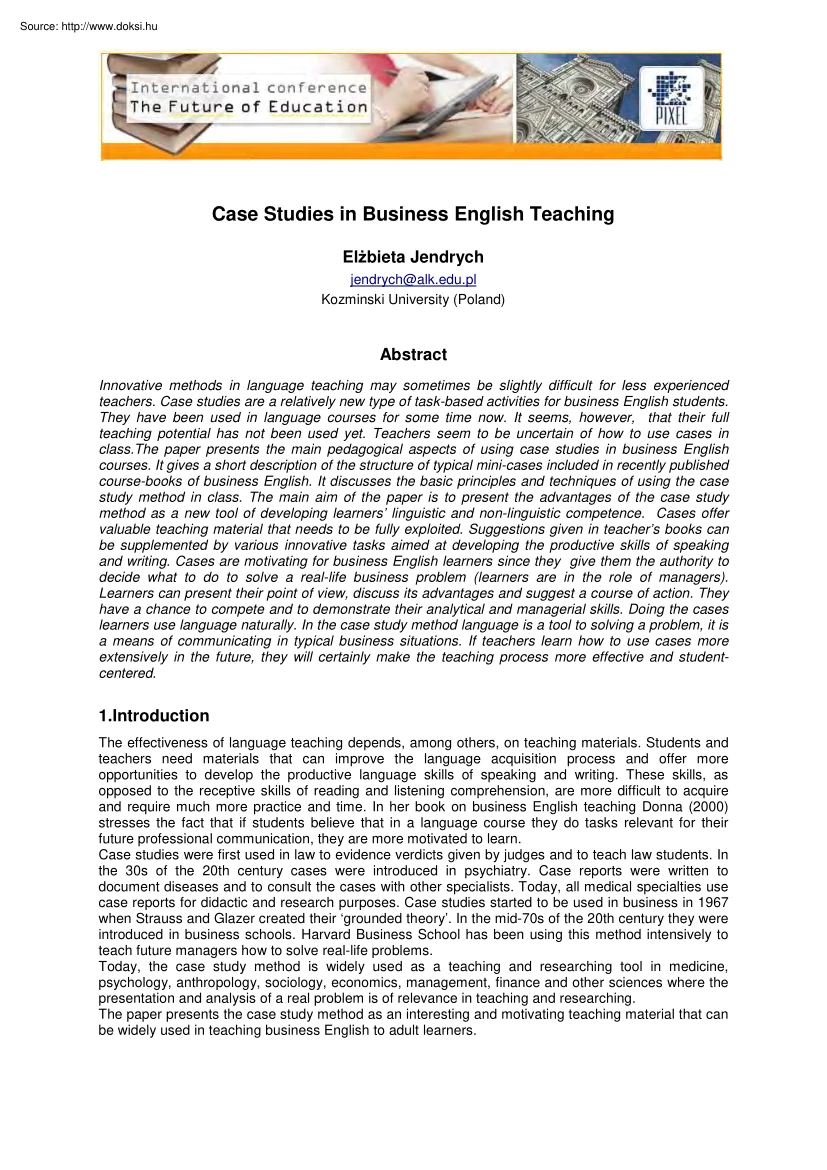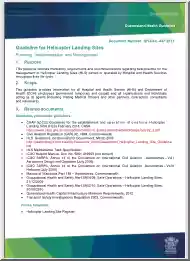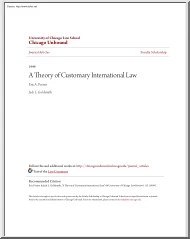Please log in to read this in our online viewer!

Please log in to read this in our online viewer!
No comments yet. You can be the first!
What did others read after this?
Content extract
Case Studies in Business English Teaching Elżbieta Jendrych jendrych@alk.edupl Kozminski University (Poland) Abstract Innovative methods in language teaching may sometimes be slightly difficult for less experienced teachers. Case studies are a relatively new type of task-based activities for business English students They have been used in language courses for some time now. It seems, however, that their full teaching potential has not been used yet. Teachers seem to be uncertain of how to use cases in class.The paper presents the main pedagogical aspects of using case studies in business English courses. It gives a short description of the structure of typical mini-cases included in recently published course-books of business English. It discusses the basic principles and techniques of using the case study method in class. The main aim of the paper is to present the advantages of the case study method as a new tool of developing learners’ linguistic and non-linguistic competence.
Cases offer valuable teaching material that needs to be fully exploited. Suggestions given in teacher’s books can be supplemented by various innovative tasks aimed at developing the productive skills of speaking and writing. Cases are motivating for business English learners since they give them the authority to decide what to do to solve a real-life business problem (learners are in the role of managers). Learners can present their point of view, discuss its advantages and suggest a course of action. They have a chance to compete and to demonstrate their analytical and managerial skills. Doing the cases learners use language naturally. In the case study method language is a tool to solving a problem, it is a means of communicating in typical business situations. If teachers learn how to use cases more extensively in the future, they will certainly make the teaching process more effective and studentcentered. 1.Introduction The effectiveness of language teaching depends, among
others, on teaching materials. Students and teachers need materials that can improve the language acquisition process and offer more opportunities to develop the productive language skills of speaking and writing. These skills, as opposed to the receptive skills of reading and listening comprehension, are more difficult to acquire and require much more practice and time. In her book on business English teaching Donna (2000) stresses the fact that if students believe that in a language course they do tasks relevant for their future professional communication, they are more motivated to learn. Case studies were first used in law to evidence verdicts given by judges and to teach law students. In the 30s of the 20th century cases were introduced in psychiatry. Case reports were written to document diseases and to consult the cases with other specialists. Today, all medical specialties use case reports for didactic and research purposes. Case studies started to be used in business in 1967
when Strauss and Glazer created their ‘grounded theory’. In the mid-70s of the 20th century they were introduced in business schools. Harvard Business School has been using this method intensively to teach future managers how to solve real-life problems. Today, the case study method is widely used as a teaching and researching tool in medicine, psychology, anthropology, sociology, economics, management, finance and other sciences where the presentation and analysis of a real problem is of relevance in teaching and researching. The paper presents the case study method as an interesting and motivating teaching material that can be widely used in teaching business English to adult learners. 2. Basic characteristics of a case study A case study describes a real-life situation, usually a problem or problems that need to be solved. Business case studies give basic information about a company (a short corporate profile), about the main decision makers and other relevant background
information. Then, they present a problem which needs to be solved, together with some additional information (often in the form of charts, graphs and tables) which may be helpful when looking for the best solution to the problem. Business case studies used at Harvard are usually 10 to 25 pages long, but there are cases which are even 50 pages long. In business English teaching cases are much shorter – they are one or two pages long and are often called mini-cases. It needs to be stressed that the qualitative and quantitative data presented in the case should not allow for easy answers. Rather, students should be encouraged to deduct, analyze, interpret and suggest various hypothetical solutions. Students prefer cases presenting problems that have appeared recently because then they know economic reality better. Not all companies want to publish their case studies; they prefer to keep the information about their problems and solutions confidential. Therefore, some course-book authors
and teachers write fictitious cases specifically for language teaching purposes. Mini-case studies have great pedagogical value since they teach students how to use their theoretical knowledge of management, economics or finance combined with analytical thinking to solve realistic business problems - all that in the medium of English. The structure of a case may vary but the protagonist is always the same: a problem in a company. That is probably why the case study method is sometimes called critical incidents or the problem method. To solve the problem we usually follow several stages: (1) reading the case, (2) identifying the problem, (3) defining priorities and limitations, (4) looking for alternative solutions, (5) choosing the best alternative and (6) preparing an action plan. A follow-up stage is sometimes added as well 3. Case studies in language teaching Teaching business English to adult students requires increasingly effective teaching materials. Case studies used in a
language class give opportunities to extensively practice speaking and writing skills based on materials that are challenging and relevant for business students. One of the possible methodologies of doing cases in language teaching includes the following steps: • • • • • • • • • • reading the case, discussing the situation in the company, analyzing and discussing the quantitative data, filling up information gaps and putting forward hypotheses, discussing weaknesses and threats, presenting company goals, presenting alternative solutions of the problem, discussing the solutions, comparing them and choosing the best one, presenting plan B, preparing an action plan, assigning tasks and setting the deadlines. The first step includes reading, the other ones develop speaking skills – students present their opinions, criticize, present their point and negotiate. Usually they work in teams and each team competes which other teams trying to offer the best solution to the
problem. Students like doing case studies because then they are the decision-makers. They are not told what to say They are the managers and the teacher is just an observer, mediator and facilitator. The case study method also provides an opportunity to develop writing competence. For instance one group of students may be asked to take the minutes of the meeting called to solve the problem or to write an agenda of the meeting. When the discussion at the meeting finishes and the final decision is taken, all students are requested to use the information in a written form. It may be a letter, a memorandum, a list of points, a mind map, an action plan, a report, an e-mail or a note – any kind of business writing which best suits the situation. To do that they need instruction from their teacher on the layout, style and appropriate tone. The case study method gives teachers a lot of flexibility in assigning tasks, roles and functions. The teacher should not blindly follow the
instructions in the teacher’s book. Helpful as they are, they are not the only directions in using a particular case. Teachers should be encouraged to experiment and use cases as input materials that are alive in class – modified, changed and exploited in various ways. 4. Didactic qualities of case studies Thanks to their basic didactic qualities, case studies offer the following opportunities: • • • • • • • • • to practice all language macro-skills: reading, speaking, listening and writing (Council of Europe 2001; Richards & Schmidt 2002), to develop the productive language skills in a very intensive way, to meetings (Brieger 1997), to analyze, present and discuss graphs, tables, charts and other quantitative data, to practice analytical and managerial skills, to incorporate develop communicative competence (Burges & Head 2005), to practice business skills of presenting, negotiating, chairing and participating in the components of business culture and
business ethics to a language course, to practice intercultural skills (M. Byram 1997, 2000, 2005) What needs to be mentioned here is the fact that case studies are a very good example of task-based activities which represent the student-centered approach. They can be used in Content-and-Language Integrated Learning (CLIL) (Language Policy Division 2006) at a university level when teaching business English to first and second year students. In his book How to teach business English Evan Frendo presents equally encouraging opinions on the case study method used in dealing with intercultural training in a business English course. He says that teachers “use case studies or critical incidents in order to present learners with a problem that needs to be solved. Because they are not personally involved in the situation, they can discuss the issues objectively, and decide upon a course of action. failure of the method” (2007: 121) Critical incidents focus on differences from a practical
rather than theoretical perspective. Of course, sometimes learners do not find a solution, or find that there is no perfect solution, but this is a reflection of the real world rather than a to practice intercultural skills (M. Byram 1997, 2000, 2005) 5. Conclusions The case study method has a great teaching potential and shows how real-life tasks can be used in language courses. Cases offer teachers many opportunities of designing their own teaching tasks; they can use cases in business, management, finance and economics as well as cases in business culture and business ethics. Learners can practice various functions of language and various vocabulary depending on the case matter. What is probably most valuable in the case study method is that learners practice the productive language skills in a natural way. They learn the language skills and at the same time develop their analytical, managerial and interpersonal skills important in business communication. The case study method may
be difficult for an inexperienced teacher. Then, probably the best solution is to follow the instruction in the teacher’s book step by step. After some time I recommend using the trial and error method and start to design innovative tasks for learners. With more experimenting with business cases teachers can learn more and, hopefully, enrich their repertoire of tailor-made real-life teaching tasks. References [1] Brieger, N. 1997 Teaching business English handbook York: York Associates [2] Burges, S. & Head, K 2005 How to Teach for Exams Harlow: Longman [3] Byram, M. 1997 Teaching and assessing intercultural communicative competence Clevedon [4] Byram, M. 2000 Assessing Intercultural Competence in Language Teaching, http://inet.dpbdpudk/infodok/sprogforum/Espr18/byramhtml, (accessed 07012011) [5] Byram, M. 2005 The roots of culture-in-language teaching http://elt.britcounorgpl/forum/rootshtm, (accessed 02022011) [6] Council of Europe. 2001 European Framework of Reference for
Languages Strasbourg [7] Donna, S. 2000 Teach Business English Cambridge: Cambridge University Press [8] Frendo, E. 2007 How to teach business English Harlow: Longman [9] Harmer, J. 2001 The Practice of English Language Teaching Harlow: Longman [10] Language Policy Division. 2006 Experts’ Report: Poland Council of Europe, Strasbourg [11] Richards, C. J & Schmidt, R 2002 Longman Dictionary of Language Teaching and Applied Linguistics. Harlow: Longman http://harvardbusinessorg/search/100011, (accessed 02022011)
Cases offer valuable teaching material that needs to be fully exploited. Suggestions given in teacher’s books can be supplemented by various innovative tasks aimed at developing the productive skills of speaking and writing. Cases are motivating for business English learners since they give them the authority to decide what to do to solve a real-life business problem (learners are in the role of managers). Learners can present their point of view, discuss its advantages and suggest a course of action. They have a chance to compete and to demonstrate their analytical and managerial skills. Doing the cases learners use language naturally. In the case study method language is a tool to solving a problem, it is a means of communicating in typical business situations. If teachers learn how to use cases more extensively in the future, they will certainly make the teaching process more effective and studentcentered. 1.Introduction The effectiveness of language teaching depends, among
others, on teaching materials. Students and teachers need materials that can improve the language acquisition process and offer more opportunities to develop the productive language skills of speaking and writing. These skills, as opposed to the receptive skills of reading and listening comprehension, are more difficult to acquire and require much more practice and time. In her book on business English teaching Donna (2000) stresses the fact that if students believe that in a language course they do tasks relevant for their future professional communication, they are more motivated to learn. Case studies were first used in law to evidence verdicts given by judges and to teach law students. In the 30s of the 20th century cases were introduced in psychiatry. Case reports were written to document diseases and to consult the cases with other specialists. Today, all medical specialties use case reports for didactic and research purposes. Case studies started to be used in business in 1967
when Strauss and Glazer created their ‘grounded theory’. In the mid-70s of the 20th century they were introduced in business schools. Harvard Business School has been using this method intensively to teach future managers how to solve real-life problems. Today, the case study method is widely used as a teaching and researching tool in medicine, psychology, anthropology, sociology, economics, management, finance and other sciences where the presentation and analysis of a real problem is of relevance in teaching and researching. The paper presents the case study method as an interesting and motivating teaching material that can be widely used in teaching business English to adult learners. 2. Basic characteristics of a case study A case study describes a real-life situation, usually a problem or problems that need to be solved. Business case studies give basic information about a company (a short corporate profile), about the main decision makers and other relevant background
information. Then, they present a problem which needs to be solved, together with some additional information (often in the form of charts, graphs and tables) which may be helpful when looking for the best solution to the problem. Business case studies used at Harvard are usually 10 to 25 pages long, but there are cases which are even 50 pages long. In business English teaching cases are much shorter – they are one or two pages long and are often called mini-cases. It needs to be stressed that the qualitative and quantitative data presented in the case should not allow for easy answers. Rather, students should be encouraged to deduct, analyze, interpret and suggest various hypothetical solutions. Students prefer cases presenting problems that have appeared recently because then they know economic reality better. Not all companies want to publish their case studies; they prefer to keep the information about their problems and solutions confidential. Therefore, some course-book authors
and teachers write fictitious cases specifically for language teaching purposes. Mini-case studies have great pedagogical value since they teach students how to use their theoretical knowledge of management, economics or finance combined with analytical thinking to solve realistic business problems - all that in the medium of English. The structure of a case may vary but the protagonist is always the same: a problem in a company. That is probably why the case study method is sometimes called critical incidents or the problem method. To solve the problem we usually follow several stages: (1) reading the case, (2) identifying the problem, (3) defining priorities and limitations, (4) looking for alternative solutions, (5) choosing the best alternative and (6) preparing an action plan. A follow-up stage is sometimes added as well 3. Case studies in language teaching Teaching business English to adult students requires increasingly effective teaching materials. Case studies used in a
language class give opportunities to extensively practice speaking and writing skills based on materials that are challenging and relevant for business students. One of the possible methodologies of doing cases in language teaching includes the following steps: • • • • • • • • • • reading the case, discussing the situation in the company, analyzing and discussing the quantitative data, filling up information gaps and putting forward hypotheses, discussing weaknesses and threats, presenting company goals, presenting alternative solutions of the problem, discussing the solutions, comparing them and choosing the best one, presenting plan B, preparing an action plan, assigning tasks and setting the deadlines. The first step includes reading, the other ones develop speaking skills – students present their opinions, criticize, present their point and negotiate. Usually they work in teams and each team competes which other teams trying to offer the best solution to the
problem. Students like doing case studies because then they are the decision-makers. They are not told what to say They are the managers and the teacher is just an observer, mediator and facilitator. The case study method also provides an opportunity to develop writing competence. For instance one group of students may be asked to take the minutes of the meeting called to solve the problem or to write an agenda of the meeting. When the discussion at the meeting finishes and the final decision is taken, all students are requested to use the information in a written form. It may be a letter, a memorandum, a list of points, a mind map, an action plan, a report, an e-mail or a note – any kind of business writing which best suits the situation. To do that they need instruction from their teacher on the layout, style and appropriate tone. The case study method gives teachers a lot of flexibility in assigning tasks, roles and functions. The teacher should not blindly follow the
instructions in the teacher’s book. Helpful as they are, they are not the only directions in using a particular case. Teachers should be encouraged to experiment and use cases as input materials that are alive in class – modified, changed and exploited in various ways. 4. Didactic qualities of case studies Thanks to their basic didactic qualities, case studies offer the following opportunities: • • • • • • • • • to practice all language macro-skills: reading, speaking, listening and writing (Council of Europe 2001; Richards & Schmidt 2002), to develop the productive language skills in a very intensive way, to meetings (Brieger 1997), to analyze, present and discuss graphs, tables, charts and other quantitative data, to practice analytical and managerial skills, to incorporate develop communicative competence (Burges & Head 2005), to practice business skills of presenting, negotiating, chairing and participating in the components of business culture and
business ethics to a language course, to practice intercultural skills (M. Byram 1997, 2000, 2005) What needs to be mentioned here is the fact that case studies are a very good example of task-based activities which represent the student-centered approach. They can be used in Content-and-Language Integrated Learning (CLIL) (Language Policy Division 2006) at a university level when teaching business English to first and second year students. In his book How to teach business English Evan Frendo presents equally encouraging opinions on the case study method used in dealing with intercultural training in a business English course. He says that teachers “use case studies or critical incidents in order to present learners with a problem that needs to be solved. Because they are not personally involved in the situation, they can discuss the issues objectively, and decide upon a course of action. failure of the method” (2007: 121) Critical incidents focus on differences from a practical
rather than theoretical perspective. Of course, sometimes learners do not find a solution, or find that there is no perfect solution, but this is a reflection of the real world rather than a to practice intercultural skills (M. Byram 1997, 2000, 2005) 5. Conclusions The case study method has a great teaching potential and shows how real-life tasks can be used in language courses. Cases offer teachers many opportunities of designing their own teaching tasks; they can use cases in business, management, finance and economics as well as cases in business culture and business ethics. Learners can practice various functions of language and various vocabulary depending on the case matter. What is probably most valuable in the case study method is that learners practice the productive language skills in a natural way. They learn the language skills and at the same time develop their analytical, managerial and interpersonal skills important in business communication. The case study method may
be difficult for an inexperienced teacher. Then, probably the best solution is to follow the instruction in the teacher’s book step by step. After some time I recommend using the trial and error method and start to design innovative tasks for learners. With more experimenting with business cases teachers can learn more and, hopefully, enrich their repertoire of tailor-made real-life teaching tasks. References [1] Brieger, N. 1997 Teaching business English handbook York: York Associates [2] Burges, S. & Head, K 2005 How to Teach for Exams Harlow: Longman [3] Byram, M. 1997 Teaching and assessing intercultural communicative competence Clevedon [4] Byram, M. 2000 Assessing Intercultural Competence in Language Teaching, http://inet.dpbdpudk/infodok/sprogforum/Espr18/byramhtml, (accessed 07012011) [5] Byram, M. 2005 The roots of culture-in-language teaching http://elt.britcounorgpl/forum/rootshtm, (accessed 02022011) [6] Council of Europe. 2001 European Framework of Reference for
Languages Strasbourg [7] Donna, S. 2000 Teach Business English Cambridge: Cambridge University Press [8] Frendo, E. 2007 How to teach business English Harlow: Longman [9] Harmer, J. 2001 The Practice of English Language Teaching Harlow: Longman [10] Language Policy Division. 2006 Experts’ Report: Poland Council of Europe, Strasbourg [11] Richards, C. J & Schmidt, R 2002 Longman Dictionary of Language Teaching and Applied Linguistics. Harlow: Longman http://harvardbusinessorg/search/100011, (accessed 02022011)




 Just like you draw up a plan when you’re going to war, building a house, or even going on vacation, you need to draw up a plan for your business. This tutorial will help you to clearly see where you are and make it possible to understand where you’re going.
Just like you draw up a plan when you’re going to war, building a house, or even going on vacation, you need to draw up a plan for your business. This tutorial will help you to clearly see where you are and make it possible to understand where you’re going.